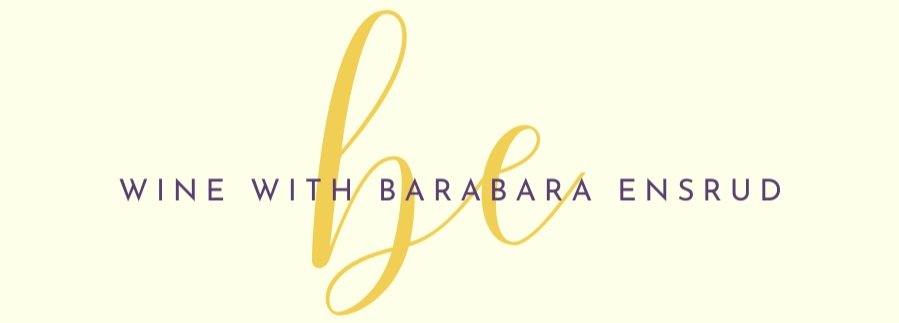Jordan Vineyards: Fifty Years of Excellence
In 2022, when Jordan Vineyards celebrated its 50th anniversary, I wrote the article below, which is re-posted here.
Jordan Vineyards, Fifty Years of Excellence
Alexander Valley, Harvest 1980. The massive structure on the hilltop still had a raw look. A vivid ochre, somewhat garish in the bright Sonoma sunshine, the stolid structure loomed above Alexander Valley in stark contrast to the soft rolling hills visible in all directions. I had come to taste wine with Andre Tchelistcheff, consultant to Jordan Vineyards, and meet its young winemaker, Rob Davis.
“Give it time,” said Andre, as we drove up the winding mile-long drive, lined with live oaks draped in Spanish moss, “it will mellow.”
And so, half a century on it has, evolving over the decades into the handsome château of today, with thick tangles of ivy softening its broad façade and elegantly landscaped courtyard, terraces and gardens.
Founded in 1972 by Tom and Sally Jordan, it was an ambitious undertaking at the time, the early years of California’s newly burgeoning wine industry. The Jordans had traveled widely in European wine regions, especially France and were keen to establish a wine estate of their own to produce a wine as fine as the classed growth Bordeaux they admired. But could it be done in California? They were dubious. Dining at Ernie’s in San Francisco one evening in 1971, they tasted Beaulieu Vineyards Georges de Latour Private Reserve Cabernet Sauvignon, made by Tchelistcheff, already a legend in California winemaking. The wine’s elegance, depth, and complexity surprised them.
The Jordans soon hired Tchelistcheff to consult on every aspect of building a state-of-the-art winery and produce a singular estate red, Jordan Cabernet Sauvignon. The maestro’s touch resulted in a balanced, highly accessible wine, aged in French oak and released in its fourth year.
As the estate evolved, so has the wine. The original vineyard planted in 1972 was on flat land near the Russian River. But as Jordan expanded to the hillsides and sourced fruit from benchland vineyards the wines grew more complex—the same elegance and balance in the fruit, but it had more depth, more intensity, more nuanced flavors that responded well to aging. The current release, 2018 Jordan Cabernet, 80 percent cabernet sauvignon, is impressive, layered with engaging ripe berry fruits—mainly blackberry, typical of Alexander Valley Cab, with hints of black cherry, boysenberry and blueberry, well-rounded tannins that add structure. I’ve found Jordan Cabs best between 12 and 15 years old, but they will often hold steady for longer. Their balance and suppleness, however, make them appealing when they are young.
Jordan Cabernets are widely included on the wine lists of fine restaurants across the country, often ranked as the number one pick. There’s solid reason for that. Those extra years in bottle before release means the wine is more integrated when it comes on the market. Most producers release their wines within two years of the vintage, perhaps a few months longer. Young Cabernets can be somewhat disjointed, especially the intensely tannic ones. The first sip may wow with ripe fruit in such wines but the tannins soon assert themselves. Jordan Cabernets are more accessible in their fourth or fifth year, already drinkable with your steak or lamb.
Older is better, however, as with any fine red. (My feeling is that we rarely give good reds the time they need to fully express their character and personality—we’re cradle robbers!)
At dinner with friends in October [‘22] we opened (and decanted) two Jordan Cabernets, the 2012 and the 2007. The 2012 was gorgeous—it’s always thrilling to catch a wine at or close to its peak of flavor, and I don’t see how the 2012, at ten years of age, will get any better, though it should easily hold a good five or more if properly stored. Highly aromatic with spiced berry accents, the fruit vibrant and lively, redolent of ripe summer berries tinged with accents of tobacco and cedar, well-integrated. Just lovely.
The 2007, a much warmer vintage, was very dark in color—quite dense at 15 years old. Much deeper and more concentrated than the ’12 with rich blackberry fruit and tannin. Rich in flavor but less vibrant. There was considerable sediment in the bottle and in the decanter it took over an an hour for the flavors to start to emerge. We didn’t finish it—thankfully, because the second night it was dynamite; much livelier—rounded berry/chocolate/cedary flavors and a long smooth finish. And a few years to go yet.
Time alone can work such magic on wine. Many California Cabernets from the 1980s have surprised me in recent years with how good they are 30+ years on. Case in point: Jordan 1980 Cabernet Sauvignon tasted early in 2022. Past its peak perhaps, but it still had alluring cherry and blackberry flavors and a long, appealing finish.
You can enjoy the current release—2018—it’s superbly structured, bursting with flavors of vibrant blackberry, black raspberry, a hint of black cherry. If you buy a case, however, or even a half case, you can experience how it evolves over the next 10, 15 years—or beyond! Be assured it will reward your patience.
Note: Jordan 2018 can still be found in some markets. Jordan 2020 is out now—get a case or split one with a friend(s) for future pleasure.
